The post Beyond Insta-Perfect Homesteading – 12 Harsh Realities of Living Off the Grid appeared first on Simple Family Preparedness.
from Simple Family Preparedness
Bringing you the best Preparedness articles from across the Internet for over 10 years!
The post Beyond Insta-Perfect Homesteading – 12 Harsh Realities of Living Off the Grid appeared first on Simple Family Preparedness.
The post 24 Apocalypse Scenarios You Never Saw Coming appeared first on Simple Family Preparedness.
The post 13 Essential Tips for Surviving a Climate Catastrophe appeared first on Simple Family Preparedness.
The post 15 Sneaky ‘Shrinkflation’ Tactics Companies Use to Fool You (And How to Beat Them) appeared first on Simple Family Preparedness.
The post 12 Chilling Historical Precedents for Modern Crises appeared first on Simple Family Preparedness.
If you are hatching baby chicks to raise a flock of your own, or just expanding your existing flock, you’ve got lots of excitement and cuteness to look forward to. But chicks, as cute as they are, demand extreme diligence on your part because they’re incredibly vulnerable to various diseases… Just like our own children ... Read more
12 Baby Chick Diseases to Watch Out For can be read in full at New Life On A Homestead- Be sure to check it out!
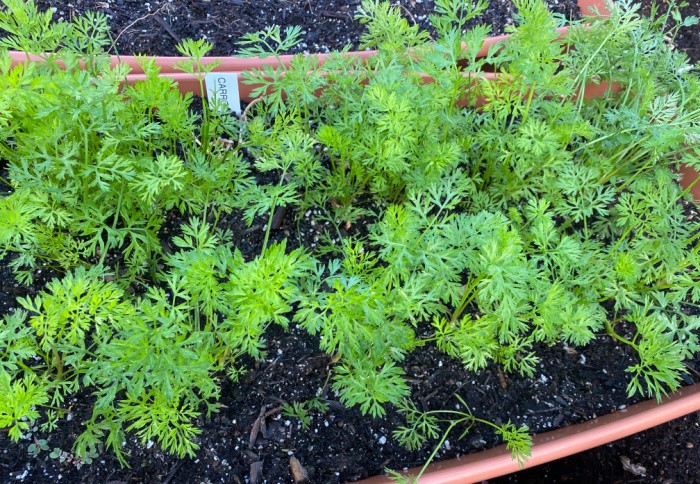
Have you been wondering what to plant in August? Can you believe the price of groceries? They keep going up. We must grow a garden and produce at least some food, hopefully more each year. I like to update my monthly series of posts every year. I’m still planting seeds outside.
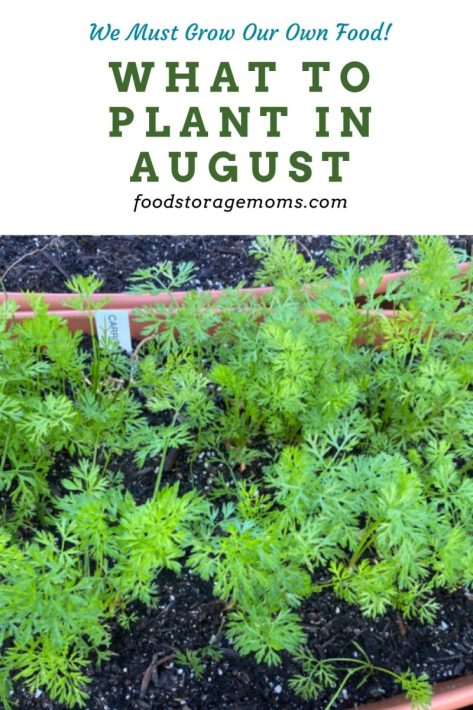
Please keep in mind the climate has changed in all zones. We can no longer count on the correct zones for planting. We must pay attention to the weather channel or our outdoor thermometers.
We can do this, I promise. You can produce some of your food if you have acres, a small lot like mine, or pots.
I’m thankful I taught myself how to hand-pollinate my Zucchini Plants and Cucumber Plants.
If you have bees, you may not have to do this, but where I live, the bees have been very limited for the past few years. I purchase all of my garden seeds from this company: SeedsNow.
I highly recommend these for CowPots and Organic Seedling Soil: this way, you can plant your seeds and place the CowPots in your garden when the temperatures are correct.
My goal is to grow some vegetables throughout the late fall and winter. We will have to see if I can get my garden set up.
I’ll eventually have to cover my raised garden beds to protect them from freezing (when they get built here in my new yard).
Check here to find your Planting Zone. It’s easy; all you do is add your zip code. I love it!Plastic Photo Container and Label Maker
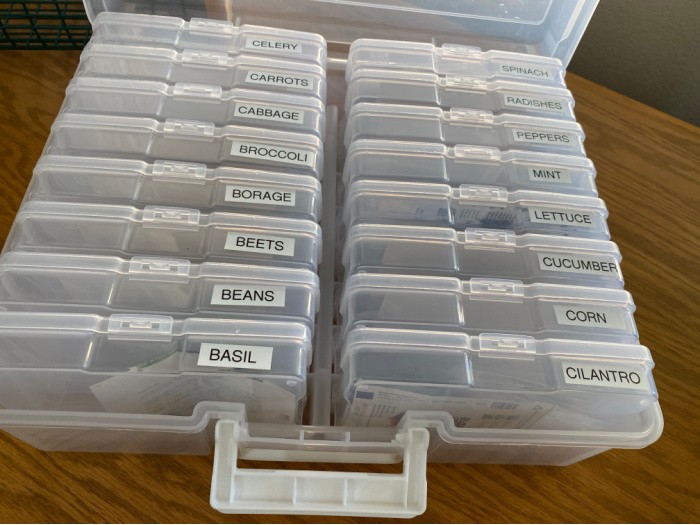
Before we get started with the vegetables you can plant, let’s be sure your soil is ready. Here are my tips for soil; I do this every Spring and Fall.
We first need to pull any weeds that have come up since the last time you turned over the soil.
Dig out any leftover crops you missed the last time you harvested. Turn the soil several times and add the following amendments if you need them:
Are you wondering what the term pH level means when gardening? Each plant prefers a different level of acidity to grow the very best harvest. The level of acidity desired varies between each plant.
Therefore, you can adjust the pH of your soil by adding lime or sulfur to bring it up or down, depending on what your soil needs. You can have your soil tested, possibly by your state extension service, or try to do it yourself with a soil tester. pH Tester Tester Strips
Usually, I talk about what to grow each month based on my zone, but in this section, I want to share with you the different plants you can grow in each zone. You can find it here if you don’t know what zone you live in. USDA PLANTING ZONE. The climate has changed in so many areas; I’m not sure these are as accurate; each year, we have a drought or too much rain.
In your fall garden, here are the plants that do best in zone 1:
You can still plant quite a bit in Zone 2 during August. Here is a list of seeds you can plant:
As the weather changes in zones 3-4, you won’t be able to plant everything, but you can still plant several veggies. Here is what you can plant in zones 3-4 in August:
There are a lot of fall plants you can start in zones 5-6. Here is what you can plant in August:
This is my area, and there are a lot of things I like to plant in August. Here are just a few things you can plant in zones 7-8 in August:
Again, August is still a great time to plant your fall garden in these zones. Here is what you can plant in zones 9-10 in August:
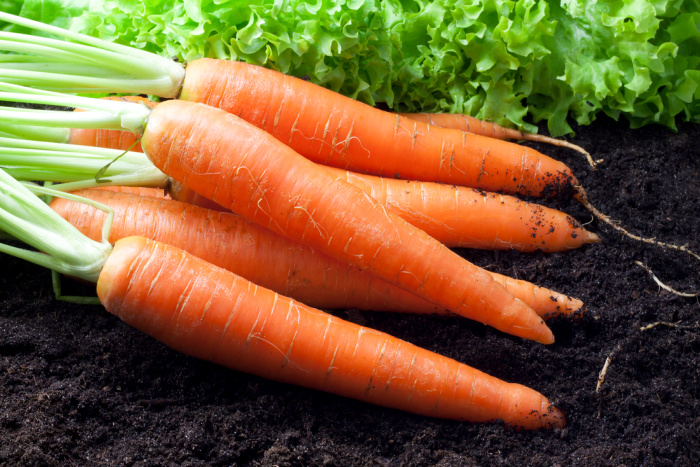
Carrots like smooth, loamy soil with nutrients added, as shown above. I like to moisten the soil slightly, sprinkle the seeds over the soil, and cover them with compost.
Keep the rows about 3 inches apart and stagger, planting the seeds over two to three weeks to have an abundant harvest for the season.
Be careful if you live in intense heat, as carrots don’t like to dry out. If you water them by hand for two to three weeks after planting the seeds, you will soon see the little sprouts.
This is when you will fertilize with some Miracle-Gro Fertilizer and thin the carrots as needed. Use mulch to cover them if you live where the summers are sweltering.
pH level for Carrots: 5.5 – 7.0
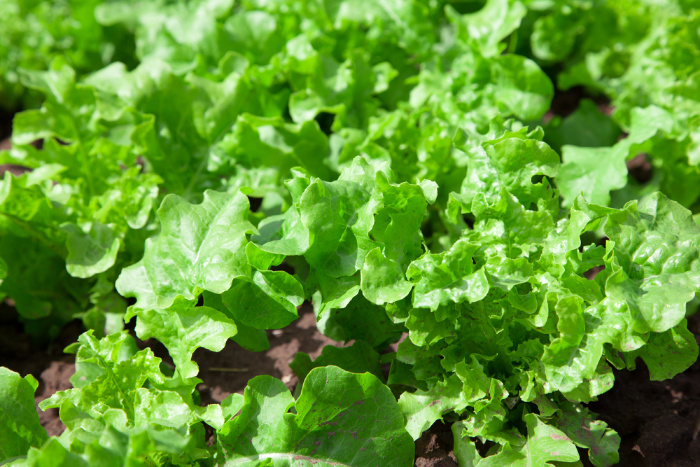
Add the amendments above to the soil where you plant your lettuce seeds. The nice thing about lettuce is that it’s so easy to grow and sprouts up quickly. Just make sure the soil is loosened, loamy, and well-drained.
Lettuce loves nitrogen and potassium, so watch the leaves as they grow. Work in a lot of organic matter or compost. Lettuce matures in 55 to 60 days. Romaine takes longer, and so do head lettuce varieties.
Plant the seeds about 1/4 inch deep, tamp them in the soil, and water them. Easy and simple. Read the package to space according to the lettuce variety you choose. Seeds will not germinate in soils above 80 degrees F. or warmer.
You can start some seeds indoors and transplant the seedlings into a shady spot if the weather is too hot outside when starting. You may want to choose heat-resistant varieties if you live where the temperatures get very hot in the summer.
It’s better to pick early than late because the leaves become bitter.
pH level for Lettuce: 6.0 – 7.0
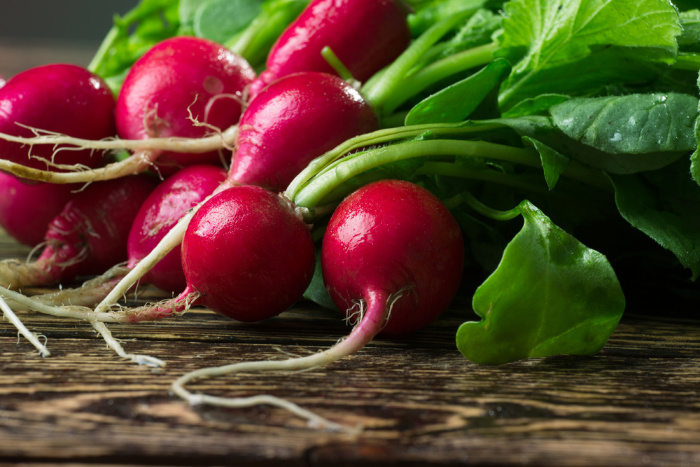
I like the radish called Red Champion because they are larger and have bright red skin. They grow in small areas, and the days to maturity are 25-30 days.
Another one I like is called Pink Beauty because the white flesh is crisp and mild. They grow well in pots or containers. Their days to maturity are 25-30 as well.
I sprinkle the seeds over the soil, do a slight soil coverup, and sprinkle with water. If you stagger the planting days, you will have several days of freshly picked radishes when it’s time to harvest.
pH level for Radishes: 6.0 – 7.0
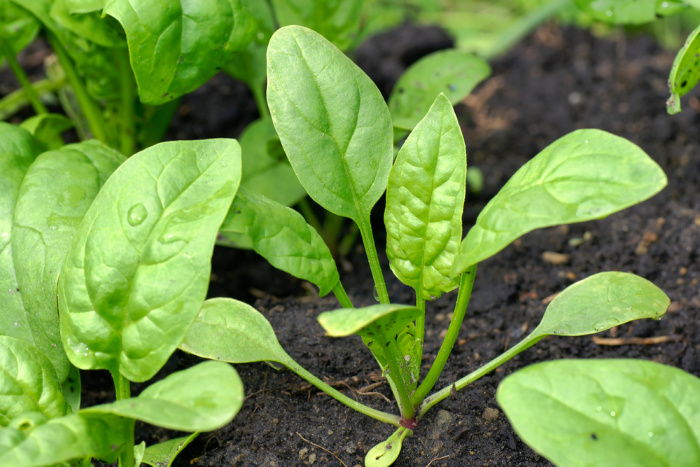
I plant New Zealand spinach seeds because they can withstand the heat of Southern Utah. It’s a large growing plant, but I make salads and smoothies and freeze a lot of spinach for the year.
This spinach variety grows from spring to fall without any issues. The more I cut it back, the more it grows. It takes 75 days to mature.
Again, ensure your soil has the amendments above, and you need to turn over the soil repeatedly. Plant the seeds at least one foot apart and the rows two feet apart.
pH level for Spinach: 6.0 – 7.5
You’ll more than likely need some way to protect your vegetables when the weather begins to dip and freeze possibly. I have used these over seedlings and individual plants in the winter. Garden Cloches
This will be my first year to try growing year-round with a few vegetables. I want to get to where I only eat the lettuce from my backyard or in my Aerogarden indoors. In case you missed this post: Growing Fresh Lettuce Indoors Year-Round
Let me know what you plan to plant in August. We can do this, my friends, I promise. May God bless this world, Linda
The post What To Plant In August appeared first on Food Storage Moms.
Few think of it, but our clothing is an essential part of our continued survival. Of course, modern clothing styles weren’t invented with survival in mind, especially women’s clothing.
The post Caught with the Wrong Clothes On appeared first on Survivopedia.
The post From Tiny to Titanic – 15 Biggest American Wildlife Threats In A Survival Scenario appeared first on Simple Family Preparedness.
The post 24 Forgotten Frugal Living Skills Your Great-Grandparents Mastered That We Should All Relearn ASAP appeared first on Simple Family Preparedness.
The post 15 Factors That Increase Your Risk During a Natural Disaster appeared first on Simple Family Preparedness.
The post 12 Fire-Starting Techniques Every Prepper Should Master appeared first on Simple Family Preparedness.
The post 25 Everyday Items That Are Cheap to Make but Cost a Fortune to Buy appeared first on Simple Family Preparedness.
The post 22 Things You Need to Know About Surviving a Financial Collapse appeared first on Simple Family Preparedness.
The post 25 Things That Could Vanish If Democrats Had Their Way appeared first on Simple Family Preparedness.
The post The States Where Squatters Can Legally Steal Your Property appeared first on Simple Family Preparedness.
The post 14 Best Bug Out Guns for Post-Collapse Survival appeared first on Simple Family Preparedness.
I wasn’t too worried when the lights flickered. It happens, sometimes. It was a stormy night, with the temperature hovering just above freezing and occasional spatters of cold rain lashing the windows. People use more power on nights like that, so it’s not unusual for a spike in consumption to cause a momentary flicker or […]
The post I Wish I Knew This Before the Last Big Blackout appeared first on Ask a Prepper.
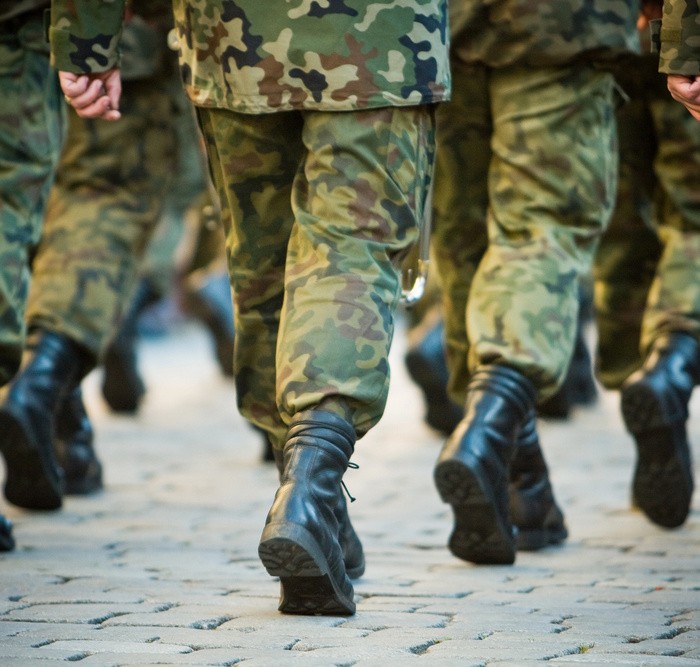
Many people have been worried about the possibility of martial law. I’ve seen a lot of memes circulating and people sharing information that isn’t entirely accurate. So, I thought it would be a perfect time to talk about everything you need to know about martial law. I wanted to update this article from 2020; things are worse now than before.
Martial law is when the military takes over an area. It is a law administered by the army/military rather than our civilian government. It can be declared in an emergency, a response to a crisis, or to control occupied territory. When this happens, many of our civil liberties are taken from us.
Declaring martial law is a rare and momentous decision for the civilian government. When it is claimed, civilian control, or some or all aspects of government, is ceded to the military. This means that the elected government officials, the people we have voted for, are NO longer in power.
Civilians have ceded control of the country in exchange for restoring order.
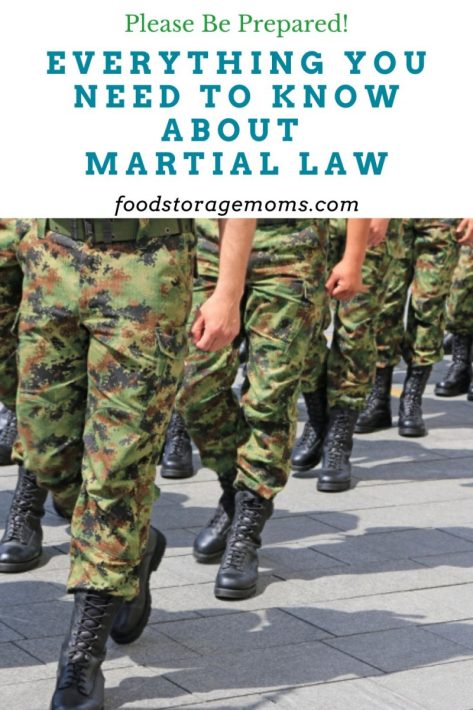
What scares many people is what happens when martial law is declared. Some of our civil liberties are suspended, such as your right to free movement, free speech, protection from unreasonable searches, and other freedoms. A military justice system has replaced the justice system that handles criminal and civil law. This means:
Here is the key information you need to remember about martial law:
Martial law can have negative ramifications, and thus, declaring martial law is to be reserved as a last resort. This means law and order are rapidly deteriorating. Typically, martial law rests in the hands of the president. However, there are limiting factors, such as how long it can last. For example, the president could declare martial law during violent civil unrest, but only for 60 days.
In the United States, martial law can be declared by the president, Congress, or state governor. A governor can impose martial law within the state’s borders over those responsible.
There are several reasons the United States President would declare martial law. Here are a few:
An example of when martial law was used was back in 1892 when the governor of Idaho instituted martial law. He did this after a group of rebellious mine workers blew up a mill, leveled a four-story building, and killed one person.
In the United States, martial law has been used in several instances. Here are some of the times leaders have declared martial law:
There are other instances of it, but these are just a few.
When you look at martial law and its meaning, you may not fully grasp how it can affect your daily life. Preppers, however, look at all aspects of life that can change and what we need to prepare for. Here are just a few of the concerns that many preppers have:
Those in charge will have surveillance to identify individuals who are viewed as troublemakers. In addition, martial law is used to control the population. But this also means they can track you and what you do. When martial law is declared, your cell phone can be tracked without a warrant. So, you may want to ditch the cell phone.
During martial law, media coverage will undoubtedly be completely government-controlled. This means there will be heavy restrictions on content and what can be posted or shared.
Curfews are a way to control the masses. The curfews will start small in some regions of the country and then could build up to curfews all over the nation as additional control is necessary.
Another fear is that if the military is trying to establish law and order, they won’t want you to have guns. Having guns and ammunition confiscated has always been a fear of preppers.
Obviously, with curfews and such, people won’t be able to work around the clock to bring the food to the stores. This means we will need to ration it. Additionally, if rationing occurs, having food stashed away could be held against you and become illegal.
During martial law, you could be considered guilty before being proven innocent. This means there could be mass arrests, quick trials, executions, concentration camps, and shoot-to-kill orders.
Although we don’t know that any or all of these things will happen, it is always better to be prepared than not.
As tensions rise between groups of people in America right now, many have been concerned about the possibility of martial law. And in some cities, we have seen looting, rioting, military involvement, and curfews put in place. With that being said, we need to be prepared. Here are some ways you can prepare for the possibility of martial law:
As I stated above, even violent protests can mean martial law for 60 days. This means you need enough food and water for at least 60 days. I don’t know about you, but if the military is moving up and down my street, I’m sure I will not go to the store to buy more supplies.
Remember that during this time, there could also be significant power outages because of the civil unrest. So, you will want to have a variety of food options. If you don’t have a fridge or freezer to keep things cold, be sure to have plenty of canned goods and non-perishables. Check out my Survival Food and Emergency Food Storage post to learn about prepping food.
The American Red Cross recommends storing one gallon of water per person per day. I recommend four gallons per person per day! Please read this post, How to Store Water for Drinking and Cooking!
You may want a weapon or two that is easily accessible, but you may also want to hide weapons and ammo. If the government does decide to confiscate your guns and ammo, you will have to decide if you want them hidden where they can’t be found. This could be a tough decision based on how the laws work under a martial law system.
If there are rations, you may be a target for looting. Desperate times may call for desperate measures for those who are not prepared. Please read How to Prepare Your House Against Looters.
You don’t need just food and water to survive. You may need alternate ways to stay connected, medicines, first aid, or ways to hunt. When you prep, you must think of everything you will need to stay alive for extended periods. Check out my list of 30 Non-Food Survival Items to Stockpile. You may also want to read Emergency Items That Will Disappear First.
Before martial law, you will want to make tough decisions with your family. This includes whether or not you will bug out to another location or stay put. Some people have bunkers they can go to that will be much safer than staying where they are. However, others may have all they need right in their home. You’ll want to make your decision now and have a plan. You can find my suggestions for bugging out here.
Hopefully, if martial law is declared, you have already prepped! But prepping isn’t all you need to do. You also need to know how to survive it while it is happening. Here are a few tips:
Anyone who previously expressed civil disobedience will most likely be the first target. In all the chaos, they will be looking for the troublemakers. So, it’s important to avoid rioting, name-calling, or attracting attention to yourself.
First of all, do not tell anyone you are a prepper. You don’t want to be a target for looting or have the military confiscating your stuff. Additionally, when collecting intel from neighbors and friends, listen more than talk.
If you wear military-style clothing, you risk a confrontation with military personnel. Your goal during martial law is to become the “gray man” and be less visible.
Even if you feel that whoever is in authority is not looking out for you, you must cooperate. This means you give respect and stay out of trouble. You don’t want to give anyone a reason to harm you or your family. If you are cooperative, you will appear meek and non-threatening. Use that tactic to your advantage.
As a prepper, you will have less reason to go to the streets to get things. However, if you live in the city, you don’t want anyone to know that. You want to play the part of the “sheeple.” Pretend with your neighbors that you have nothing. Keep up the act of trying to find food, etc. Observe your neighbors and act like they do.
During civil unrest, you never know what’s going to happen. While you can, take self-defense classes, have and make improvised weapons, and again keep yourself less visible.
Martial law is serious business. Sometimes, it is necessary, but you should still be prepared to survive it even when it is. Remember, prepare for the worst and hope for the best! Please stock up if and when you can. May God Bless this world, Linda
Copyright Images: Martial Law Deposit photos_179267038_s-2019, Martial Law Soldiers Marching Depositphotos_1726090_s-2019 By Rachwal, Marching Soldiers Depositphotos_109546896_s-2019 By Branex
The post Everything You Need to Know About Martial Law appeared first on Food Storage Moms.
Estimated reading time: 20 minutes
Gardening isn't just for the spring and summer months. If you've already harvested the majority of your crops and are left with an empty gardening space, you may be wondering if you should do something with it.
If you don't take advantage of the fertile soil, the weeds certainly will. The weather is still nice during the day and the nights aren't too cold yet, so why not plant another round of crops?
There's still time to plant, even in September. There are plenty of veggies that actually prefer the cooler weather, and because they have relatively short growth cycles, you can get one more crop of fresh vegetables before winter sets in.
Now, for some people in northern regions of the US, winter is knocking on the door and some crops won't have time to ripen before the first freeze. In other regions, you don't have to limit yourself to short crops. You have plenty of time to grow yummy fruits and veggies without worrying too much about a freeze.
Want to save this post for later? Click Here to Pin It On Pinterest!
The following list will help you determine what you can plant in September based on where you live in the United States. Use the links below to jump to your region:
• Northwest
• Midwest
• Southwest
• Northeast
• Southeast
The cool wet temperatures of fall will limit your choices to plants with short growing cycles and plants that thrive in the cool weather. Covering the plants at night in mid to late October will protect them from any light freezes.

Arugula thrives in the cool, damp climate of the Northwest. Sow seeds directly into the garden in late summer, spacing them about 1 inch apart in rows 6 inches apart. Thin the seedlings to about 4-6 inches apart to allow room for growth.
Arugula can benefit from partial shade, which protects the leaves from getting too much direct sunlight. Harvest the leaves when they are young and tender, around 3-4 inches long, by snipping them at the base, which encourages new growth.

Collard greens are robust vegetables that prefer a sunny location and rich, well-drained soil. Start the seeds indoors 6-8 weeks before the first expected frost. Transplant seedlings when they have 4-6 leaves, spacing them about 18-24 inches apart in rows 3 feet apart.
Collards can withstand light frosts, which can make the leaves sweeter. Harvest the outer leaves first, allowing the inner leaves to continue growing. Leaves are best when they reach about 10 inches long, but they can be harvested at any size.

Lettuce grows best in cool weather, making it ideal for fall in the Northwest. Plant the seeds in late summer in a spot that gets plenty of morning sunlight but is shaded during the hotter part of the day. Space seeds 1 inch apart in rows 12-18 inches apart. Thin seedlings to about 6-8 inches apart.
Keep the soil moist as dry soil can make the lettuce bolt and turn bitter. For a continuous supply, practice succession planting every two weeks. Harvest by cutting the outer leaves, allowing the center to keep producing.

Mustard greens enjoy cool temperatures and mature very quickly. Sow seeds directly in the garden, spacing them about 1 inch apart in rows 18-24 inches apart. Thin seedlings to 6 inches apart.
Mustard greens can be harvested as baby greens in about 3-4 weeks or allowed to mature fully. Regular harvesting encourages the plants to produce new leaves. Watch out for pests like aphids and flea beetles, which can be controlled organically.

Radishes are a fast-growing crop that can be harvested in three to four weeks. Sow seeds directly into the ground about 1 inch apart in rows 12 inches apart. Thin seedlings to about 2 inches apart to allow the roots to expand.
Water them regularly to prevent the soil from drying out, but be careful not to overwater them, which can dilute the flavor and lead to splitting. Harvest radishes when they're about 1 inch in diameter.

Spinach is a cold-hardy crop that can produce multiple harvests throughout the fall. Sow the seeds directly in the garden in late summer, spacing them 1 inch apart in rows 12-18 inches apart. Thin seedlings to 4-6 inches apart.
Spinach can be harvested by cutting the outer leaves, allowing the center leaves to continue growing for future harvests. Protect the plants from early frosts with floating row covers for an extended growing season.
Depending on where you are in the Midwest, you may be able to grow well into late October. However, some areas may be limited to plants that will be ready to get out of the ground in early to mid October. Covering the plants when it is expected to be cool will give you an extra week or so in the growing season.

Also known as corn salad, Mache is a hardy green that grows best in cool climates. Sow the seeds directly in the garden in late summer, spacing them 1 inch apart in rows 6 inches apart.
Since Mache has a delicate root system, it's best to water it gently and regularly to maintain consistent soil moisture without disturbing the roots. Harvest the leaves when they reach about 2 to 4 inches in length by cutting them at the base.

Peas need a cool climate to flourish and should be planted in early fall. Sow the seeds directly in the garden 1 inch apart and 1 inch deep, in rows 18-24 inches apart. Install a trellis or stakes when you plant them so they can climb.
Water regularly, particularly once flowers and pods begin to form, to promote plump peas. Peas are less likely to need fertilization if you add compost to the soil before planting. Harvest peas when the pods are full and plump.

Radishes grow fast and can be harvested in less than a month. Sow seeds directly into the ground about 1 inch apart in rows 12 inches apart. After they sprout, thin them to about 2 inches apart so the roots have room to expand.
Water them regularly to keep the soil moist, but be careful not to waterlog them. Harvest radishes when they are about 1 inch in diameter for the best flavor.

Salad greens like lettuce, arugula, and mustard greens thrive in cool weather. Sow the seeds directly into the ground, spacing them according to the packet instructions. Generally, space seeds about 1 inch apart in rows 12-18 inches apart.
Water them regularly to keep the soil moist. Harvest the leaves when they're young and tender for the best flavor. Continue planting new seeds every two weeks for a continuous harvest.

Spinach is a hardy green that thrives in cool weather. Sow seeds directly in the garden in late summer, spacing them 1 inch apart in rows 12-18 inches apart. Thin seedlings to 4-6 inches apart.
Harvest the outer leaves first, allowing the inner leaves to continue growing for multiple harvests. Protect from early frost with row covers.

Turnips do best in an area with full sun and soil that's rich and tilled deeply. Sow seeds directly in the garden in late summer, spacing them 1 inch apart in rows 12-18 inches apart. Thin seedlings to 4-6 inches apart.
Turnips are ready to harvest when they're about 2-3 inches across. The greens can be harvested continuously throughout the season. Use mulch to keep the soil moist and prevent weeds.
The Southwest has very few limitations on what can be planted in the fall. The warm climate, which extends well into the winter months, makes it a perfect place to grow cool-weather crops along with some of the standard crops found in gardens all over the country.

Broccoli requires full sun and rich, well-drained soil. Start the seeds indoors about 6 weeks before the last expected frost date. Transplant seedlings outside when they have 4-6 leaves and are strong enough to withstand a mild frost. Space seedlings 18 inches apart in rows 24-36 inches apart.
Water broccoli consistently to keep the soil moist but not soggy, and use mulch to help retain moisture. Harvest the central head when it is tight and firm, then allow side shoots to develop for additional harvests.

Brussels sprouts are slow growers that need plenty of nutrients. Start the seeds indoors 6-8 weeks before the last expected frost date. Transplant seedlings when they have 4-6 leaves, spacing them about 18-24 inches apart in rows 24-36 inches apart.
They do better with stakes as they grow tall and top-heavy. Keep the soil consistently moist and add a high-nitrogen fertilizer every few weeks to maximize their growth. Harvest the sprouts from the bottom of the stalk upwards as they mature.

Cauliflower needs consistent attention to produce big heads. Start the seeds indoors 6-8 weeks before the last expected frost date. Transplant the seedlings when they have 4-6 leaves, spacing them about 18 inches apart in rows 24-36 inches apart.
Water regularly to keep the soil evenly moist and apply mulch to keep the roots cool. Cauliflower heads are ready to harvest when they are dense and tight. Use a string or rubber band to tie the leaves around the head. This will blanch it and improve the flavor.

Kale is very hardy and can grow well into the winter months. Start seeds indoors 6-8 weeks before the last expected frost date. Transplant seedlings when they have 4-6 leaves, spacing them 12-18 inches apart in rows 18-24 inches apart.
Water kale regularly, especially during dry spells, to keep the soil moist. Kale tastes sweeter after being touched by a bit of frost. Harvest the outer leaves first, allowing the plant to continue producing.

Leeks need a long growing season and do best when they're started indoors in the late summer. When they're a few inches high, transplant them into a sunny spot with fertile, well-draining soil. Space seedlings 6-8 inches apart in rows 12-18 inches apart.
Leeks need consistent watering to develop long, white stems, so keep the soil nice and moist. Hill the soil around the stems as they grow to blanch them. Harvest leeks when they are at least 1 inch in diameter.

Lettuce grows best in cool weather and needs plenty of morning sunlight. For the Southwest, plant it in an area that receives some afternoon shade to protect it from intense heat. Sow seeds directly in the garden, spacing them 1 inch apart in rows 12-18 inches apart. Thin seedlings to 6-8 inches apart.
The soil should be rich in organic matter and well-draining. For a continuous harvest, plant new seeds every two weeks. Harvest leaves from the outer edges to allow continuous growth.

Root crops like carrots, beets, and radishes do well in the Southwest's fall climate. Sow seeds directly into the garden in loose, well-draining soil. Space seeds 1 inch apart in rows 12-18 inches apart. Thin seedlings to about 2-4 inches apart, depending on the crop.
Water consistently but make sure not to overwater them. Harvest root crops when they reach the desired size for the best flavor. Carrots and beets are best harvested when they are about 1-2 inches across.

Swiss chard can be planted in either full sun or partial shade. Sow the seeds directly in the garden, spacing them 1 inch apart in rows 12-18 inches apart. Thin seedlings to 6-8 inches apart.
It prefers rich, moist, well-drained soil. Harvest the leaves from the outer edges as they mature and allow the younger leaves to continue growing at the center of the plant. Swiss chard can tolerate light frosts, extending its harvest period.
In this region, the early winters and cool temperatures limit the vegetables that can be grown without the protection of a greenhouse or cold boxes. However, there are a few plants that will do okay.

Arugula thrives in cool, moist conditions, making it perfect for the Northeast in the fall. Sow seeds directly in the garden in late summer, spacing them 1 inch apart in rows 6 inches apart. Thin seedlings to 4-6 inches apart.
Harvest the leaves when they're young and tender for the best flavor. Harvest continuously throughout the season to encourage new growth.

Lettuce is a cool-season crop that thrives in the Northeast's fall climate. Sow seeds directly in the ground, spacing them 1 inch apart in rows 12-18 inches apart. Thin seedlings to 6-8 inches apart.
Provide partial shade during the hottest part of the day. Harvest the leaves from the outer edges to allow continuous growth from the center.

Mache, or corn salad, grows well in cool weather and can be sown directly into the garden in late summer. Sow seeds 1 inch apart in rows 6 inches apart.
Water gently and regularly to maintain consistent soil moisture. Harvest the leaves when they're young for the best flavor. Mache can tolerate light frosts, extending its harvest period into late fall.

Spinach thrives in cool weather and can be planted in late summer for a fall harvest. Sow seeds directly in the garden, spacing them 1 inch apart in rows 12-18 inches apart. Thin seedlings to 4-6 inches apart.
Water regularly to keep the soil moist. Harvest the outer leaves first, allowing the plant to continue producing new growth from the center. Protect from early frost with row covers.
The extended summer extends the growing season quite a bit in this region. You can grow a lot more than the standard lettuces and leafy greens that most of the other regions are limited to.

Beets grow well in the Southeast's fall climate. Sow seeds directly in the ground in loose, well-draining soil, spacing them 1 inch apart in rows 12-18 inches apart. Thin seedlings to 3-4 inches apart.
Water consistently to keep the soil moist but not waterlogged. Harvest beets when they are about the size of a golf ball for the best flavor. The greens can also be harvested and used like spinach.

Bok choy thrives in cooler temperatures and can be planted in the Southeast in late summer. Sow the seeds directly in the garden, spacing them 1 inch apart in rows 12-18 inches apart. Thin seedlings to 6-8 inches apart.
Water regularly to keep the soil moist. Harvest the entire plant when it reaches maturity, or pick the outer leaves as needed for a continuous supply.

Broccoli grows well in the Southeast's fall climate. Start seeds indoors 6-8 weeks before the last expected frost date. Transplant the seedlings when they have 4-6 leaves, spacing them 18 inches apart in rows 24-36 inches apart.
Provide it with full sun and rich, well-draining soil. It's best to use mulch to retain moisture. Harvest the central head when it is tight and firm, then allow side shoots to develop for additional harvests.

Cabbage is a hardy vegetable that can be planted in the Southeast in late summer. Sow seeds directly in the garden or start them indoors 6-8 weeks before the last expected frost date. Transplant seedlings when they have 4-6 leaves, spacing them 18-24 inches apart in rows 24-36 inches apart.
Cabbage needs full sun and rich, well-draining soil. Water regularly and mulch to retain moisture. Harvest cabbage heads when they are firm and fully formed.

Carrots grow well in the Southeast's fall climate. Sow seeds directly in the garden in loose, well-draining soil, spacing them 1 inch apart in rows 12-18 inches apart. Thin seedlings to 2-4 inches apart.
Water consistently to keep the soil moist. Harvest carrots when they reach the desired size for the best flavor, generally when they are about 1 inch across.

Cauliflower can be grown in the Southeast in the fall. Start seeds indoors 6-8 weeks before the last expected frost date. Transplant seedlings when they have 4-6 leaves, spacing them 18 inches apart in rows 24-36 inches apart.
Give them full sun and rich, well-draining soil. Water regularly to keep the soil evenly moist. Harvest the heads when they are dense and tight for the best flavor.
Like this post? Don't Forget to Pin It On Pinterest!
You May Also Like:
The post The Best Fall Garden Vegetables by Region in the U.S. appeared first on Urban Survival Site.
Homesteading is all the rage these days, something that can inspire a little bit of hipster-ish contempt in us old hands who have been living it as an actual lifestyle for a while. Increasingly, affluent people are fleeing the cities, cities which are turning into dystopian nightmares thanks to the policies that they have voted ... Read more
A Down-to-Earth Cost Analysis for Homesteading can be read in full at New Life On A Homestead- Be sure to check it out!
[…]
The post How to Can Peaches and Nectarines appeared first on The Survival Mom.
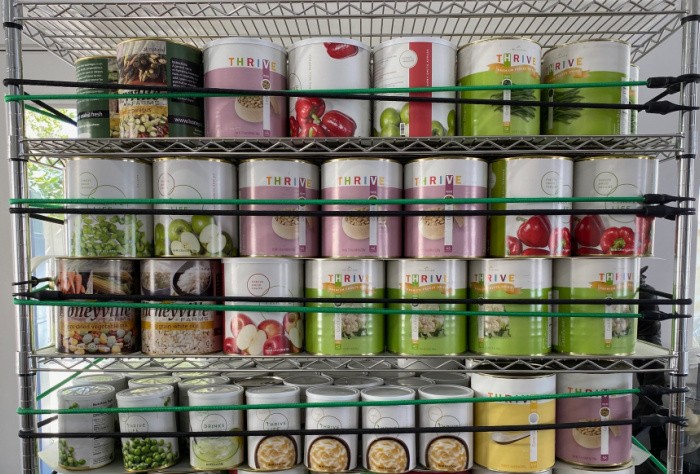
Today, I’m sharing 11 items needed in your pantry. Sometimes, we need to see lists repeatedly before saying, “Oh my gosh, I forgot that one.” Knowing which items to buy can come in handy if you’d like to stock your pantry with the essentials. However, if you’re unsure what to put in your pantry, check out this list of the 11 essentials you can use when preparing different meals for yourself and your loved ones.
Update: we moved into our house and because it’s smaller than our last one I’m scrambling to find a spot for all my stuff, particularly in the kitchen. So I have one of my 72-inch tall by 48-inch wide and 18-inch deep rolling racks in the living room/kitchen area. You know, where you watch TV, eating popcorn with food storage next to the couch (see picture)? It’s no big deal. I have to laugh because the food means more to me than decorations. That’s how I roll, literally.
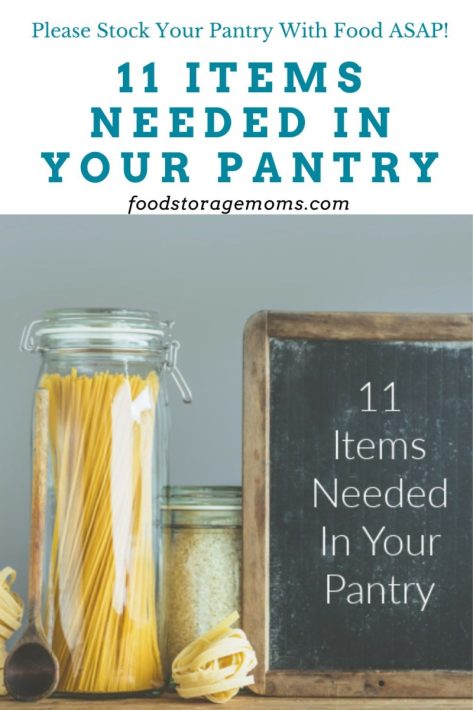
Always have pasta in your pantry because you don’t know when you might need it to make a full lunch or dinner meal or even a quick pasta salad. You can buy different types of pasta, including spaghetti, fettuccine, macaroni, rotini, and more. It’s always good to have a versatile selection of pasta in the pantry. Don’t forget that you can also make homemade soups and add pasta to them with meat, veggies, and seasonings.
One of the things I like about pasta is how far a package goes. You take a handful of spaghetti and cook it for dinner and it feels like you could feed the neighborhood. A very cost-effective item for your pantry.
Be sure to get a variety of seasonings that will flavor your food. Some of the best herbs include pepper, garlic powder, seasoning salt, cayenne pepper, cajun seasoning, and garlic salt. Then, you can grab what you like to use on your favorite foods. Even if you’re on a budget, you can find most spices at low prices if you check store ads and are willing to try your favorite store’s brand name. Another place to check for special deals is at the dollar store.
Buy some chicken bouillon cubes and have them in the pantry for different meals. For example, toss them in boiling water to prepare the chicken broth for soups and other meals. Please put them in a pot with rice to give your rice more flavor, and use them in other meals to take the flavor to the next level.
Once you start using chicken bouillon cubes in your cooking, you won’t want to go back to those old bland meals of times past. Chicken Bouillon Cubes.
And don’t forget beef and vegetable bouillon cubes. They add so much flavor to so many meals.
Collect canned vegetables on sale and then keep them in the pantry. Then, you can serve heated canned vegetables as a side dish with some of your favorite foods, including chicken, pork chops, turkey breast, and meatloaf. The last few times I’ve been to several local grocery stores, they’ve all had full-scale case goods sales. Please take advantage of them NOW.
While canned vegetables don’t have the fresh taste that fresh vegetables have, they’re still delicious and nutritious. So, to ensure you have something healthy and flavorful to put on your plate, get canned peas, carrots, beets, green beans, and more.
In case you missed this post, Canned Foods I Highly Recommend You Store
It’s always beneficial to buy boxed cake mixes on sale and have them in your pantry because you don’t know when you’ll have to make a cake in a hurry. If your kids are in the mood for something sweet or someone’s birthday is approaching, you have the cake mix ready to go and you can prepare a delicious dessert easily by following the box instructions.
However, you can also mix the boxed cake with minimal ingredients, such as one can of your favorite soda. It tastes good and is perfect for a pinch when you don’t have eggs or milk for the batter. Or use your dehydrated eggs and instant milk.
October is a month where typically my favorite Duncan Hines brand of cake mixes are on sale 2 for $2.00. They only do it once a year, so I like to buy 12 boxes to get me through months of special holidays, birthdays, or other events calling for a cake.
Start buying different types of beans for your pantry, such as black beans, pinto beans, and even red kidney beans. You can make side dishes with them, add them to rice, and use them in different recipes, such as slow cooker meals and casseroles. Beans are good for you, containing essential vitamins and nutrients that can improve health. Most varieties of beans are a great source of protein, too.
As long as no one in the household has a peanut allergy, it’s good to have a peanut butter container in the pantry. It’s great for making quick peanut butter and jelly sandwiches, but you can also use it in many recipes.
For example, peanut butter is a great ingredient when making homemade cookies or cakes and adding that peanut butter taste to those baked treats. It’s also great to spread on crackers or serve with fruit and veggies.
Who doesn’t love peanut butter and jelly/jam sandwiches, right?
Don’t forget about canned tomatoes! The canned tomatoes are fantastic in the pantry because you can put them in soups and stews to add more flavor. There are different variations of canned tomatoes, including stewed and diced options. In addition, canned tomatoes typically don’t cost much money.
If you like a little spice in your food, buy your favorite hot sauce or salsa and keep it stocked in the pantry. Then, you can add it to nearly anything, such as fried chicken, rice, tacos, and other flavorful foods, to easily enhance the flavor and the “heat” your food will have.
Be sure to buy brown rice and store it in a container in your pantry. You can make traditional brown rice or prepare variations by adding ingredients and spices, such as vegetables, soy sauce, garlic powder, and more.
Brown rice is a great side dish to serve with vegetables, meat, or fish, such as chicken, salmon, flounder, and pork. But, of course, you don’t need to eat meat with it. You can even add it to homemade burritos to make them more fulfilling if you’d like.
Remember, brown rice doesn’t have a very long shelf life because of the oil in the bran layer; it only stays good for about six months.
Finally, flour is one of the most important staples of all time to have in your pantry. You can do so much with flour, such as preparing pancakes, making waffles, coating chicken before frying it, making a cake from scratch, and so much more.
It’s a valuable ingredient when you want to make homemade gravy or thicken up some of your favorite soups. Because many recipes require a bit of flour, you can’t go wrong with having it in your house. I like bread flour and use it in most of my recipes calling for flour. I enjoy making homemade bread, so having bread flour in the pantry is natural for me, but I use it in other flour-based recipes too.
When you plan to stock up on the essentials and add them to your pantry, these are the 11 items you need. Of course, you don’t have to rush out to the store and buy them all at once but consider getting these items when you can find them on sale to get them at the best price.
When you have these staples in your closet, you have what you need to make all kinds of meals for yourself and your loved ones. In addition, you’re more than likely to have what you need when following different recipes. May God Bless this world, Linda
Copyright Images: Spaghetti and Rice Depositphotos_216187588_s-2019
The post 11 Items Needed In Your Pantry appeared first on Food Storage Moms.